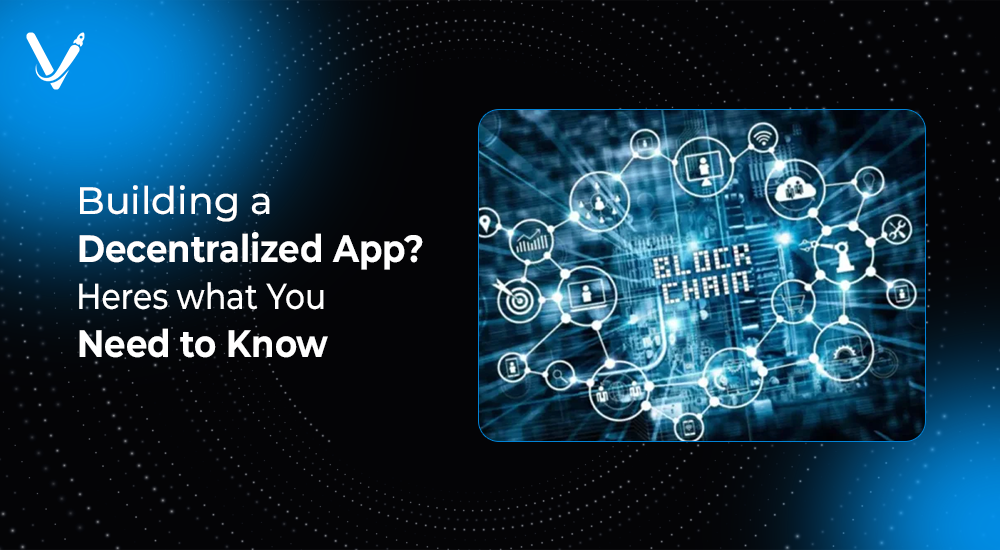Over the last decade, software development has undergone a paradigm shift. The rise of blockchain technology has opened doors to decentralized applications (dApps)—apps that operate without a central authority, giving users greater control, transparency, and trust. Instead of relying on a single entity to store and manage data, dApps run on distributed networks, often powered by blockchain smart contracts.
But building a dApp is not just about “putting it on the blockchain.” It’s a blend of architectural design, user experience, cryptography, compliance, and scalability considerations. The process requires a unique mindset, technical skill set, and a keen understanding of decentralized ecosystems.
In this guide, we’ll break down everything you need to know—from choosing the right blockchain to ensuring security, designing the architecture, and planning for long-term success.
What is a Decentralized Application (dApp)?
A decentralized application is software that runs on a distributed network rather than being hosted on centralized servers.
Core Characteristics of dApps
- Decentralized Backend: Operates on blockchain or distributed systems.
- Open Source: Many dApps have publicly viewable code for transparency.
- Token Economy: Often use native tokens for transactions or governance.
- Immutable Records: Data is stored permanently and transparently on-chain.
- Smart Contracts: Automated execution of business logic without intermediaries.
Examples of Popular dApps
- Uniswap – A decentralized exchange (DEX) for crypto trading.
- Axie Infinity – A blockchain-based game with a play-to-earn model.
- Lens Protocol – A decentralized social networking protocol.
Why Build a Decentralized App?
1. Enhanced Security
In centralized systems, a breach at the server level can compromise all user data. In dApps:
- Data is distributed across nodes
- Cryptographic encryption secures transactions
- No single point of failure makes it harder for hackers to target
Example: Ethereum-based DeFi platforms have operated securely for years, processing billions without central database hacks (though smart contract bugs can still occur—hence audits are key).
2. User Ownership and Control
Users retain control over their data, assets, and identity in dApps.
- No corporate entity can unilaterally delete or alter user data
- Users can port their data across platforms via blockchain wallets
- Digital assets (like NFTs) remain with users, not the platform
Example: In Web3 social media dApps, your follower base and posts can be moved to another platform without losing your community.
3. Transparency and Trust
All transactions and processes are recorded on an immutable public ledger.
- Users can verify operations independently
- Developers can’t manipulate logic without public consensus
- Builds credibility, especially in finance, governance, and supply chains
Example: A blockchain-based charity dApp can show donors exactly where their funds are allocated.
4. No Single Point of Failure
Because the application is distributed:
- Outages in one node don’t bring the app down
- It’s resistant to DDoS (Distributed Denial of Service) attacks
- Uptime is guaranteed by the network's consensus mechanism
Example: Filecoin stores files in a decentralized way—if one storage provider goes offline, your data remains accessible from others.
5. Reduced Censorship
In centralized apps, governments or corporations can block accounts or remove content. dApps:
- Operate in a permissionless environment
- Give users freedom to interact without centralized approval
- Are resistant to regional restrictions
Example: Decentralized publishing platforms like Mirror.xyz allow creators to publish without fear of censorship.
6. Direct Monetization and Token Incentives
dApps can integrate native tokens or cryptocurrencies for:
- Paying for services
- Rewarding contributions
- Enabling play-to-earn or participate-to-earn models
Example: Creators on decentralized video platforms can receive direct crypto payments from viewers without revenue cuts from intermediaries.
7. Global Accessibility
Because they run on public blockchains:
- Anyone with internet access and a wallet can join
- No restrictions based on geography, banking access, or platform policies
Example: DeFi lending platforms like Aave allow users worldwide to borrow and lend without a bank account.
Understanding the Blockchain Layer
The blockchain you choose will define your dApp’s capabilities, transaction costs, and scalability.
Popular Blockchain Choices for dApps
- Ethereum: The most mature ecosystem for smart contracts.
- Polygon: Layer-2 scaling solution for Ethereum with lower gas fees.
- Solana: High-speed blockchain optimized for performance.
- BNB Smart Chain: Low-cost and EVM-compatible.
- Avalanche: High throughput and customizable subnets.
Tip: Choose a chain based on your use case, transaction speed requirements, and developer ecosystem support.
Key Components of a dApp Architecture
A decentralized application typically has three layers:
Blockchain Layer (On-Chain)
- Smart contracts execute core logic.
- Immutable storage for critical data.
- Gas fees apply for every transaction.
Off-Chain Layer
- Handles heavy computation not feasible on-chain.
- Stores large files in decentralized storage like IPFS or Arweave.
Frontend Layer
- The user-facing interface, often built with React, Vue, or Angular.
- Connects to blockchain via libraries like Web3.js or Ethers.js.
Security Considerations in dApp Development
Security breaches in decentralized ecosystems are irreversible—once funds are stolen, recovery is nearly impossible.
Common Security Risks
- Reentrancy Attacks: Exploiting smart contract functions to drain funds.
- Phishing Attacks: Targeting users to steal private keys.
- Oracle Manipulation: Altering off-chain data feeds.
How to Mitigate Risks
- Run static code analysis.
- Use multi-signature wallets for admin control.
- Employ bug bounty programs.
Tokenomics: Designing an In-App Economy
Many dApps integrate tokens for:
- Payments
- Governance
- Staking and rewards
Important Factors to Consider
- Utility: Why should the token exist?
- Distribution: Fair launches vs. pre-mines.
- Incentives: Encourage user participation without hyperinflation.
User Experience Challenges in dApps
Unlike traditional apps, dApps face:
- Slow transaction confirmation times.
- Gas fee volatility.
- Wallet connection issues.
Developer Strategies
- Batch transactions to reduce fees.
- Offer Layer-2 integration for speed.
- Provide clear progress indicators for on-chain actions.
Case Studies: Successful dApp Models
Uniswap
- Decentralized exchange with automated market makers.
- Generates revenue from transaction fees.
Axie Infinity
- Play-to-earn gaming model
- Combines NFTs, DeFi, and social interaction.
Lens Protocol
- Social networking infrastructure.
- User-owned profiles and data.
Step-by-Step Process to Build a dApp
Define the Use Case
Identify the core problem your dApp solves.
Choose the Blockchain
Match chain capabilities with project requirements.
Develop and Test Smart Contracts
Use testnets (Rinkeby, Mumbai) before mainnet deployment.
Integrate Frontend
Connect UI with blockchain through wallet APIs.
Secure the System
Run audits, penetration tests, and continuous monitoring.
Deploy and Maintain
Monitor performance, release updates, and engage the community.
The Future of Decentralized Applications
Decentralized applications (dApps) are expected to evolve beyond their current niche into mainstream tools that power the next generation of the internet. Built on blockchain and peer-to-peer networks, their future will be defined by greater scalability, interoperability, and user-friendliness.
Key Developments Ahead:
- Mass Adoption: Simpler onboarding, gasless transactions, and user-friendly interfaces will make dApps accessible to non-crypto audiences.
- .Cross-Chain Interoperability: Assets and data will move seamlessly between different blockchains, enabling unified ecosystems.
- AI Integration: Artificial intelligence will enhance security, personalization, automation, and in-app decision-making.
- DAO Governance: More dApps will be community-governed, with users voting on updates, economics, and policies.
- Layer 2 and High-Speed Chains: Increased adoption of scalable solutions like Layer 2 networks and alternative blockchains to reduce costs and improve performance.
- Real-World Asset Tokenization: Expansion into real estate, commodities, and other tangible assets through tokenization and smart contracts.
- Decentralized Identity and Privacy: Growth of self-sovereign identity systems and privacy-preserving technologies such as zero-knowledge proofs.
Impact Across Industries:
- Finance: Decentralized lending, insurance, and asset trading without intermediaries.
- Gaming: Player-owned assets, cross-game economies, and play-to-earn models.
- Healthcare: Secure data sharing, patient-owned medical records, and transparent research tracking.
- Supply Chain: Immutable tracking of goods, fraud prevention, and improved compliance.
Conclusion: Turning Vision Into Reality
Building a decentralized application is an exciting yet challenging endeavor. It demands a mix of blockchain knowledge, secure coding practices, UX design, and community engagement. Done right, your dApp can offer unmatched transparency, ownership, and trust—values at the heart of the Web3 movement.
At Vasundhara Infotech, we specialize in end-to-end dApp development—from ideation to deployment and scaling. Our team ensures your project is not only functional but secure, user-friendly, and ready for mass adoption.Contact us today.




